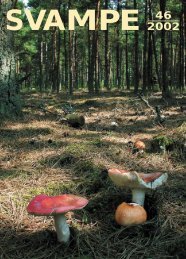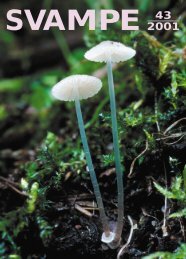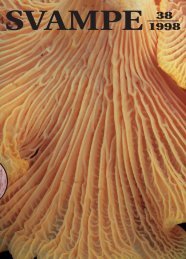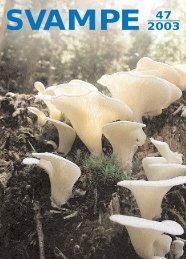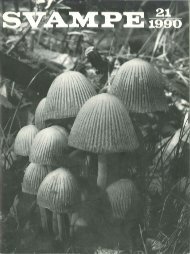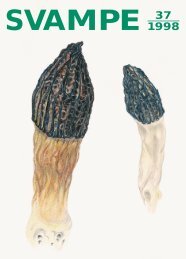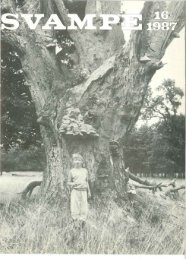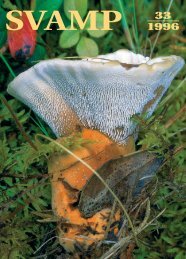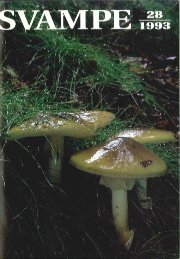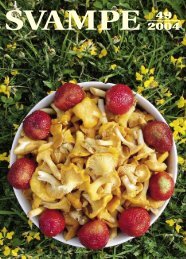Friesia X, 4-5
Friesia X, 4-5
Friesia X, 4-5
You also want an ePaper? Increase the reach of your titles
YUMPU automatically turns print PDFs into web optimized ePapers that Google loves.
- 245 -<br />
Fig. 18. L ulworthia sp. Perithecia with long necks, immersed or partly free<br />
due to erosion. From driftwood collected at Grønhøj 19.10.1967. X 10.<br />
The marine fungi colonizing driftwood, together with the substrate<br />
itself, are subjected to a physically disturbed environment and it is<br />
therefore not unreasonable to assume that the location of fruit bodies<br />
in relation to the substrate is of importance in the dispersal biology<br />
of the fungi concerned. This appears to be particularly pronounced in<br />
group 2 and to alesser extent in group 1 b. In heavy seas and in surf<br />
along the coast the formation of perithecia is rendered difficult.<br />
Hence propagation is undoubtedly favoured by the proximity of the<br />
coast where the wood can possibly undergo alternate periods on the<br />
beach and in the coastal water. These marine fungi can be regarded<br />
as coast types and their stay on the beach may pos sibly represent<br />
an important stage of their life cycle. The species in group 2 have<br />
been regarded as arenicolous (sand-inhabiting) (KOHLMEYER 1966) in<br />
contrast to the lignicolous species (group 1 a). This is unfortunate<br />
since both groups of fungi seem to live in and on wood, and at the<br />
locality none of the fungi was found .growing freely between the<br />
grains of sand. In any case no fruit bodies were found except very<br />
close to a carbohydrate food base (wood).<br />
Group 1 a contains marine fungi which are independent of the<br />
coast proximity with regard to fruit body formation and hence pro<br />
pagation. The open sea should not influence the possibility of spore<br />
production. In this connection may be mentioned that SCHAUMANN<br />
(1969) in an investigation of Ascomycetes on piles located in water




